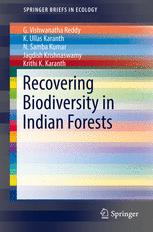

Most ebook files are in PDF format, so you can easily read them using various software such as Foxit Reader or directly on the Google Chrome browser.
Some ebook files are released by publishers in other formats such as .awz, .mobi, .epub, .fb2, etc. You may need to install specific software to read these formats on mobile/PC, such as Calibre.
Please read the tutorial at this link: https://ebookbell.com/faq
We offer FREE conversion to the popular formats you request; however, this may take some time. Therefore, right after payment, please email us, and we will try to provide the service as quickly as possible.
For some exceptional file formats or broken links (if any), please refrain from opening any disputes. Instead, email us first, and we will try to assist within a maximum of 6 hours.
EbookBell Team

5.0
110 reviewsThis book demonstrates how varying levels of human disturbance manifested through different management regimes influence composition, richness, diversity and abundance of key mammal, bird and plant species, even within ecologically similar habitats. Based on our results, we show the critical importance of the ‘wildlife preservation’ approach for effective biodiversity conservation. The study also provides examples of a practical application of rigorous methods of quantitative sampling of different plant and animal taxa as well as human influences, thus serving as a useful manual for protected area managers. Protected areas of various kinds have been established in India with the goal of arresting decline in, and to provide for, recovery of biodiversity and ecosystem services. A model that targets ‘wildlife preservation’ under state ownership is practiced across the country. However, forests in India are under intensive human pressure and varying levels of protection; therefore, protected areas may also experience open-access resource use, a model that is being aggressively advocated as a viable alternative to ‘preservationism’. We have evaluated the conservation efficacy of alternative forest management models by quantifying levels of biodiversity under varied levels of access, resource extraction and degree of state-sponsored protection in the Nagarahole forest landscape of southwestern India.